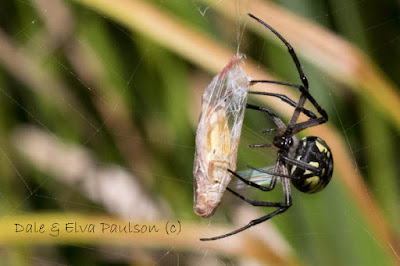Since I drew the wasp and ruffed grouse we have made eight
more day trips into the Cascades, including two all the way to Crater Lake
National Park. We enter the park from
the North Entrance. ... and are immediately reminded of the fires from recent
past summers. New lodgepoles are already
popping up in the stark forest.
Lodgepoles have special fire resistance cones, just waiting for the heat
of the next wildfire to release their seeds.
Recovery will be slow at this high elevation, but it will happen. Fortunately for us most of Crater Lake’s
wildfires were far from the road.
One short stretch has an amazing collection of burls. Every time I go buy I itch to sketch
them. Now that the fire has swept
through I can see even more of them.
I’ve tried to find out the cause but even park officials are not sure
.... a fungus? ... an insect
infestation? Whatever the cause, we find
a few here and there, and lots in an area about one half mile long.
For Dale and me, one of the big draws of Crater Lake N.P. is
hoping to find a pika. ( See my
blogpost: http://elvafieldnotes.blogspot.com/2014/10/where-are-pikas.html).
Here are my notes for September 25:
 We’re up at Crater Lake for the day .. clear blue sky,
pleasant in the sunshine; cool in the shade.
We eat lunch at our ‘pika spot.’
We didn’t hear or see one all during lunch, but then I walked out and
sat on a sun-warmed boulder, and sang ‘Ten Little Indians.’ (Sometimes I sing while waiting, hoping to convince
the critters around me that all is well.)
One did scold, but I guess he didn’t like my singing.
We’re up at Crater Lake for the day .. clear blue sky,
pleasant in the sunshine; cool in the shade.
We eat lunch at our ‘pika spot.’
We didn’t hear or see one all during lunch, but then I walked out and
sat on a sun-warmed boulder, and sang ‘Ten Little Indians.’ (Sometimes I sing while waiting, hoping to convince
the critters around me that all is well.)
One did scold, but I guess he didn’t like my singing.
Later I walk to the next opening and see two – but far off.
But at the next opening I spot one near the road! He is scampering with a big elderberry
frond. I can even see his haystack
tucked under a large boulder. At first
he just wants to sit and inspect us, but soon he dares harvest another mouthful
of greenery. Trip after trip. So cooperative! He lets out a whistle when a noisy vehicle
drives by, but is soon back to work.
We
photographed until the light dims and then drive up into the sunlight on the
rim.
Heading home we see this raven perched on a wisp of a snag
right on the rim of Crater Lake’s caldera.










